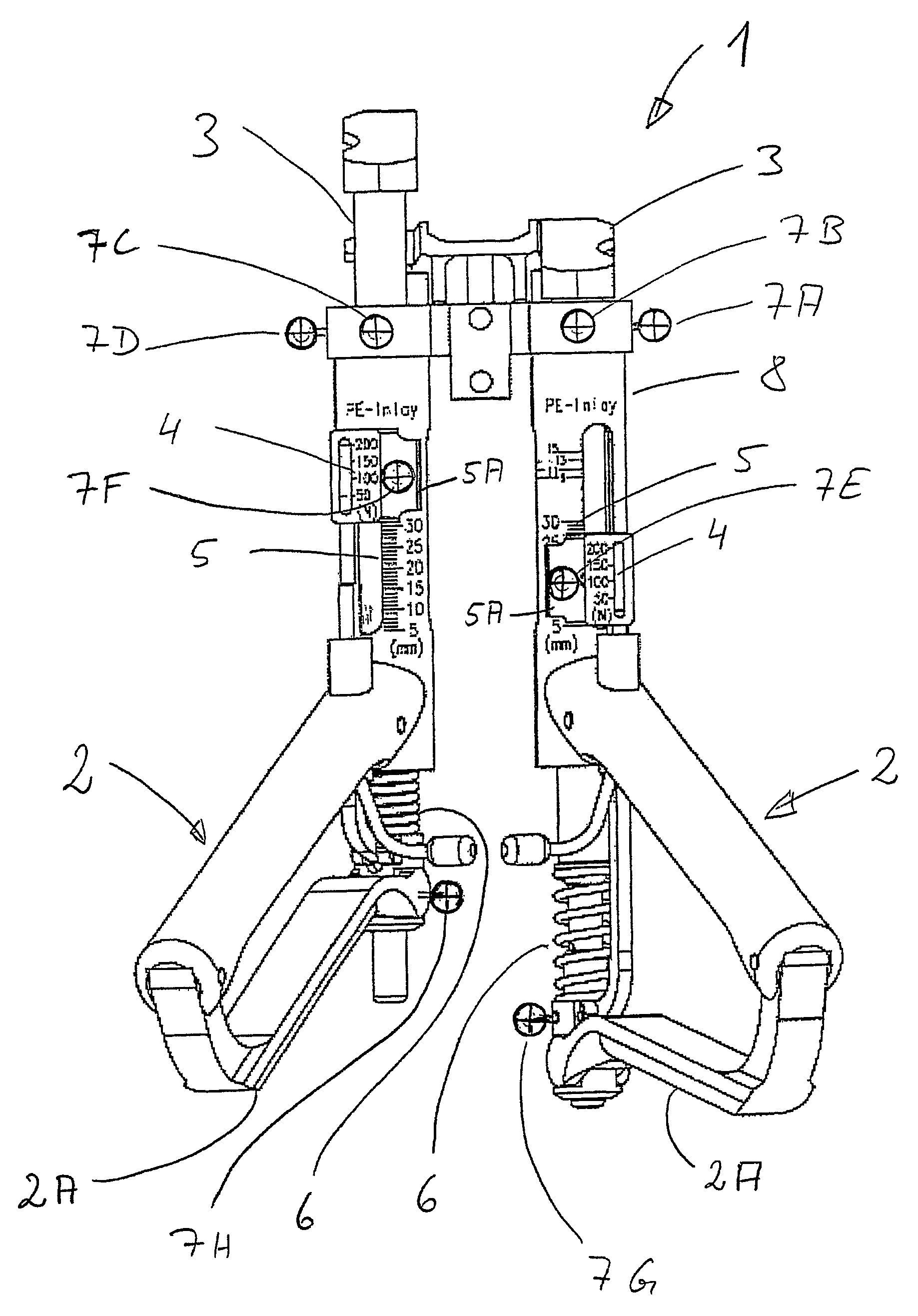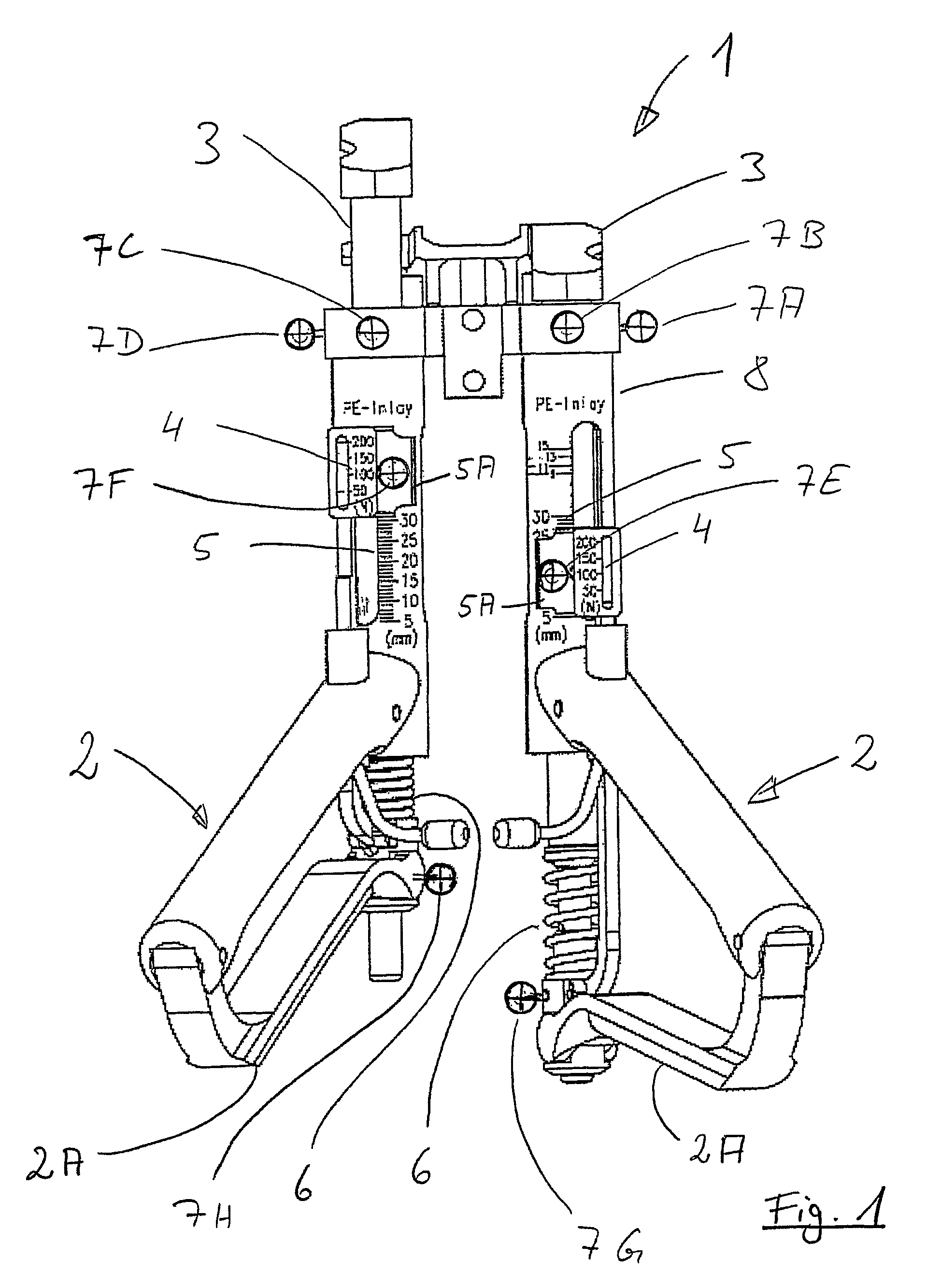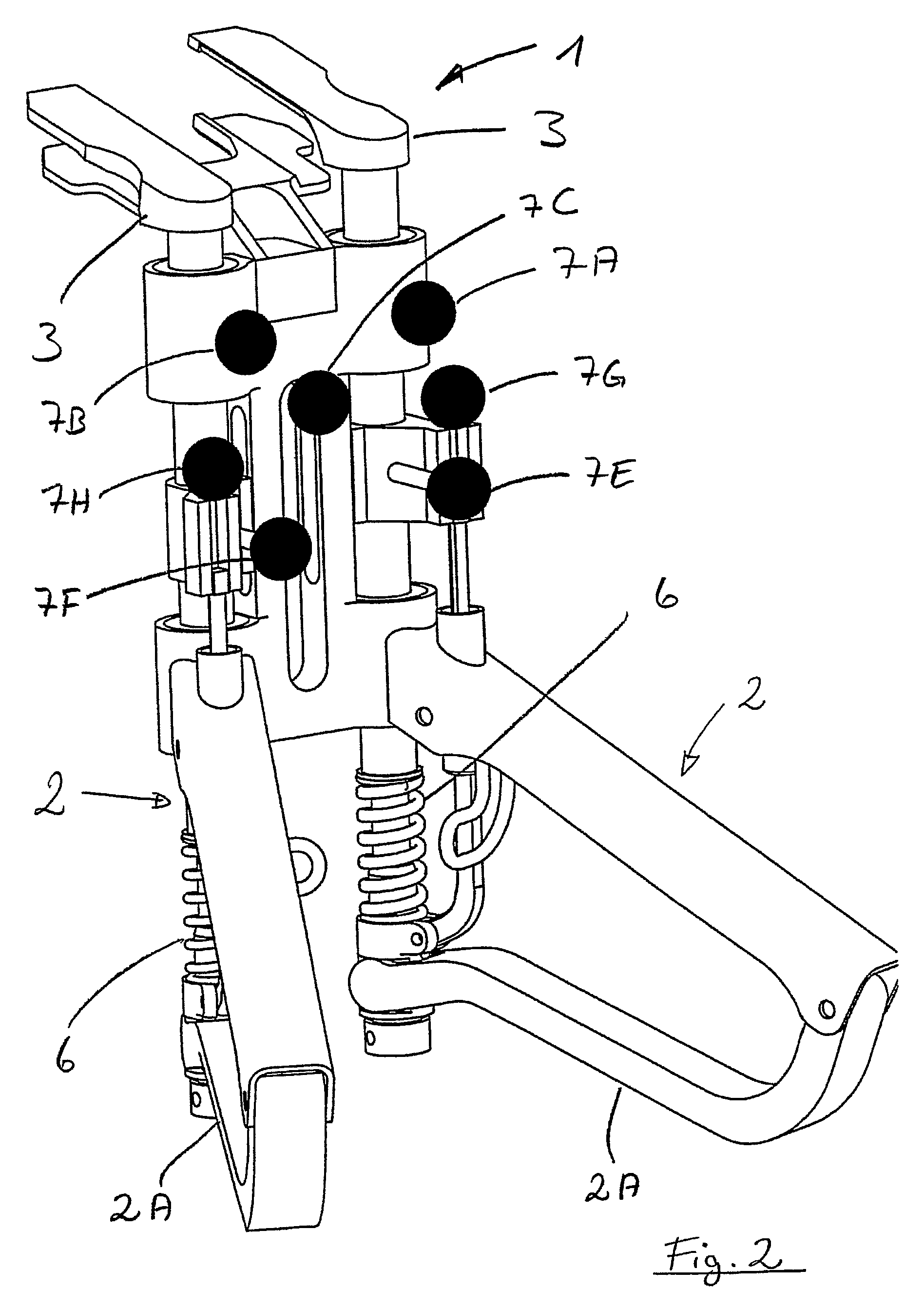Device and method for ascertaining the force-displacement characteristic curve of one or more ligaments
a technology of force displacement and characteristic curve, which is applied in the field of devices and methods for ascertaining the force displacement characteristic curve of one or more ligaments, can solve the problems of inability to make a recording such a kind, inability to record a precise force displacement characteristic curve, and inability to optimize the kinematics of the artificial joint, etc., to achieve the effect of reducing the amount of equipment, and reducing the number of procedures
- Summary
- Abstract
- Description
- Claims
- Application Information
AI Technical Summary
Benefits of technology
Problems solved by technology
Method used
Image
Examples
Embodiment Construction
[0040]The appliance 1 shown in FIG. 1 for tensioning ligaments, in more precise terms for tensioning articular ligaments and for tensioning a capsule apparatus of a joint, has two handles 2. Each of those handles 2 is in operative engagement with, in each case, an associated tensioning element 3. With each of the two handles 2 there are furthermore associated, in each case, a force indicator 4 and a displacement indicator 5. Both the force indicators 4 and also the displacement indicators 5 have, in each case, an associated scale for reading off the values. The force indicators 4 show, in each case, the force exerted on the respectively associated tensioning element 3 by means of the associated handle 2, in more precise terms by means of a substantially vertically movable part 2A of the handle 2. The displacement indicators 5 represent the excursion of the respectively associated tensioning element 3 brought about by the force indicated on the respective force indicator 4.
[0041]As e...
PUM
 Login to View More
Login to View More Abstract
Description
Claims
Application Information
 Login to View More
Login to View More - R&D
- Intellectual Property
- Life Sciences
- Materials
- Tech Scout
- Unparalleled Data Quality
- Higher Quality Content
- 60% Fewer Hallucinations
Browse by: Latest US Patents, China's latest patents, Technical Efficacy Thesaurus, Application Domain, Technology Topic, Popular Technical Reports.
© 2025 PatSnap. All rights reserved.Legal|Privacy policy|Modern Slavery Act Transparency Statement|Sitemap|About US| Contact US: help@patsnap.com



